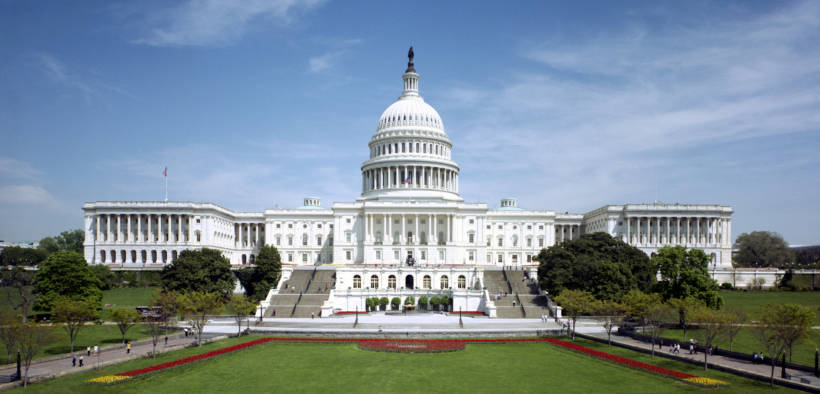Government Shutdown Avoided With Last Minute Budget, But How is Your Money Being Spent?

A last-minute budget deal will prevent a second government shutdown under the Trump administration. We take a look at the main ways the government allocated taxpayer money.
On Friday, December 20, just in time to prevent a government shutdown, President Trump signed two bills to fund the federal government until September 30, 2020. The $1.4 trillion dollar spending package includes some border wall funding, money to create the Space Force, and funding to study gun violence. It also makes changes to certain taxes for the Affordable Care Act (ACA) and raises the federal legal age to purchase tobacco from 18 to 21.
The previous spending bill was a short-term measure passed in September when the budget from March of 2018 expired. September’s bill avoided a government shutdown then but only provided funding for the government up to December 20 of this year.
There was some conflict about the new spending bill and a late-stage veto threat from the Whitehouse over aid to Ukraine. However, lawmakers from both sides seemed committed to avoiding another government shutdown and were eventually able to hash out a bill to keep the government funded for another nine months.
The federal deficit is expected to increase by between $400 billion and $500 billion over the next 10 years as a result of the spending package.
Military Funding
The new budget includes an increase in defense spending of $22 billion dollars with a total budget of $738 billion. These funds are earmarked for pay raises for military personnel and other government employees, mental health programs and suicide prevention for Veterans, the creation of a new Space Force, and other military related items. The aggressive military spending and creation of a new branch of the military were important points in the bill for Trump but seem somewhat at odds with the President’s stance on current conflicts the U.S. is involved in. Trump recently removed U.S. troops from Syria, and is reportedly getting ready to draw down most or all of the U.S. military force in Afghanistan.
Border Wall
Another key item for the President in the bill was additional funding for the barrier along the U.S. border with Mexico. Part of the military budget is $1.4 billion which will go to the “border wall”. This was well below the $5 billion that Trump had requested for the wall, but still more than some Democrats wanted to spend.
Parental Leave for Federal Workers
Under the new bill, over 2 million civilian employees of the federal government will be entitled to 12 weeks of paid leave after they become parents. Of the 193 countries in the world, the U.S. is one of less than 10 that does not mandate any paid leave for new parents. The parental leave mandate for Federal workers in the defense bill is a significant step but it remains to be seen whether this will lead to laws creating paid leave for private sector employees.
Tobacco Age
Roughly 20 states and dozens of cities and towns have already raised the legal age to buy tobacco products to 21. The change at the federal level will likely go into effect in summer of 2020. Raising the smoking age was a rare point of bipartisan agreement in a contentious package. Because the change applies to electronic smoking devises as well as cigarettes it is seen as one of several steps necessary to combat youth vaping.
ACA Taxes
Three medical taxes that were supposed to help fund the ACA have been repealed in the newly signed bills. An excise tax on medical devices, a health insurance tax, and the so-called “Cadillac tax” on high price employer health plans will all be phased out over the next couple of years. All three taxes faced criticism from the medical industry and had delays in their implementation so there was some bipartisan support for their removal.
How this will impact funding for the ACA will vary from state to state and may depend on the outcome of an ongoing lawsuit about how the health insurance tax was applied to Medicaid managed organizations.
Gun Violence Study
The last time the federal government paid for a scientific study on gun violence was 1996. In the new spending bill, there is $25 million set aside to conduct research on the issue. $12.5 million will go to the Centers for Disease Control and $12.5 million will go to the National Institute on Health.
Overall the spending package represents a good deal of compromise from all sides. The President, Republican lawmakers, and Democratic lawmakers, all got some of what they wanted but also had to make some concessions.







